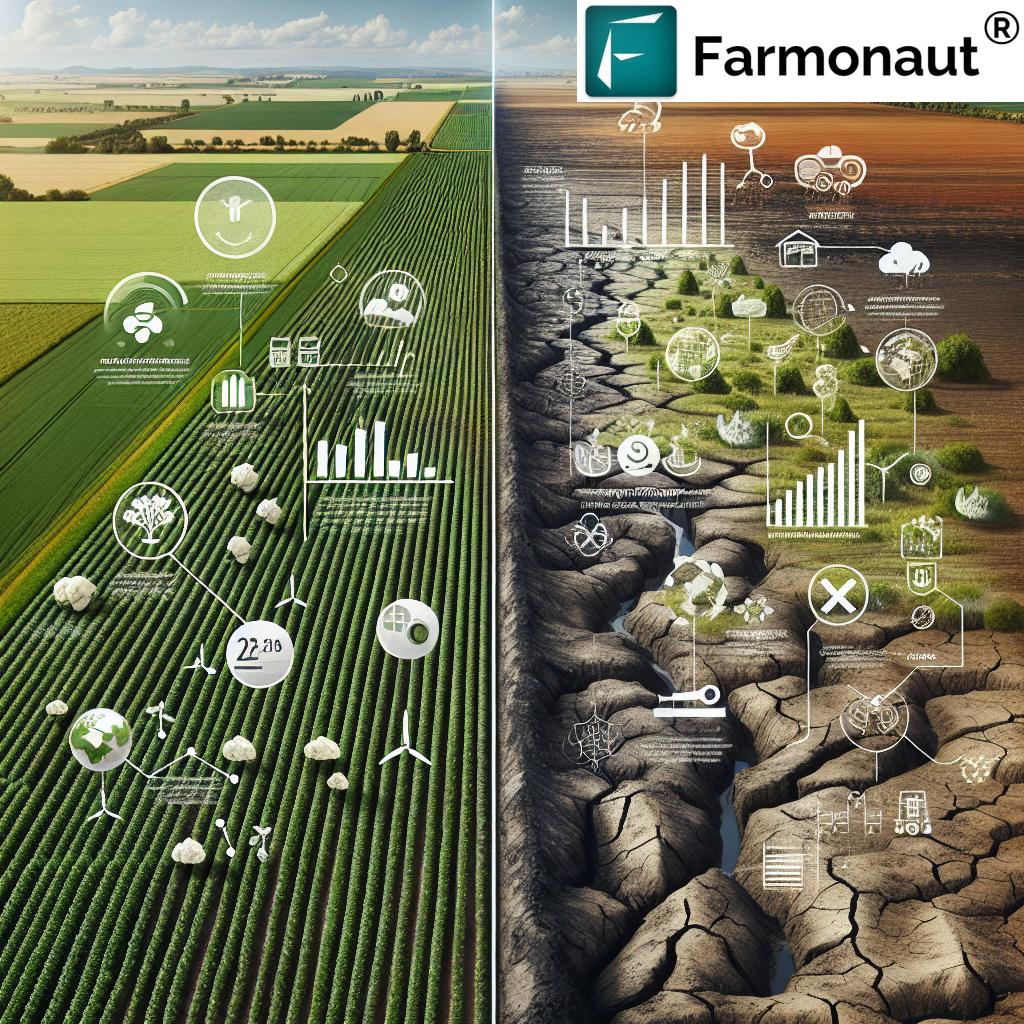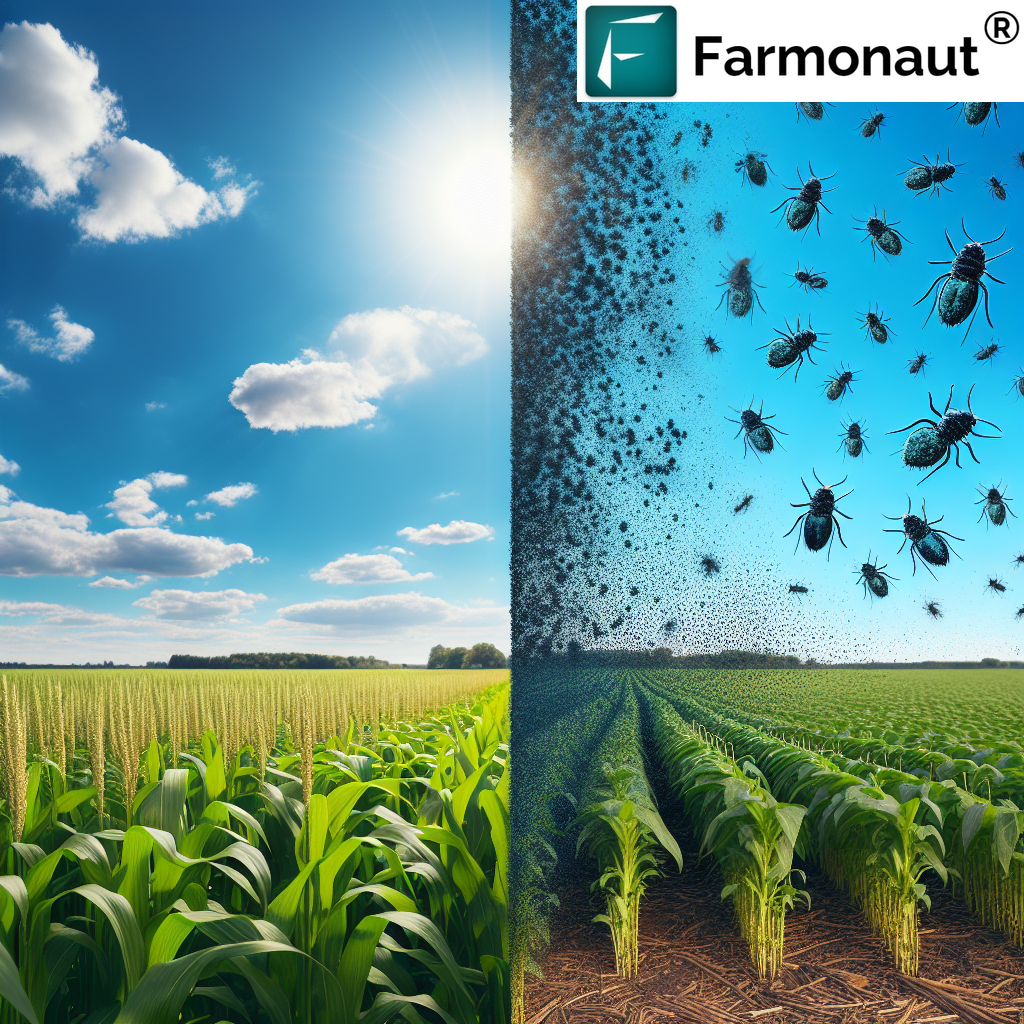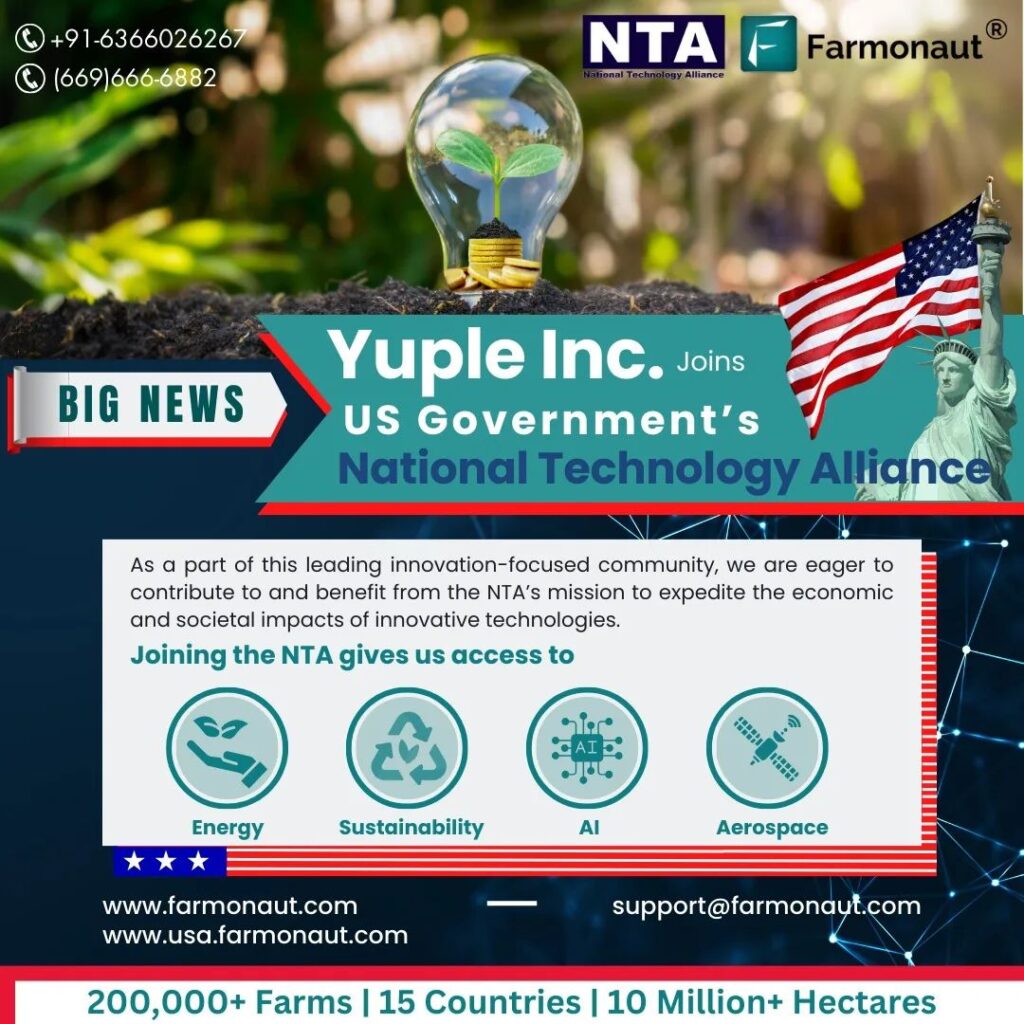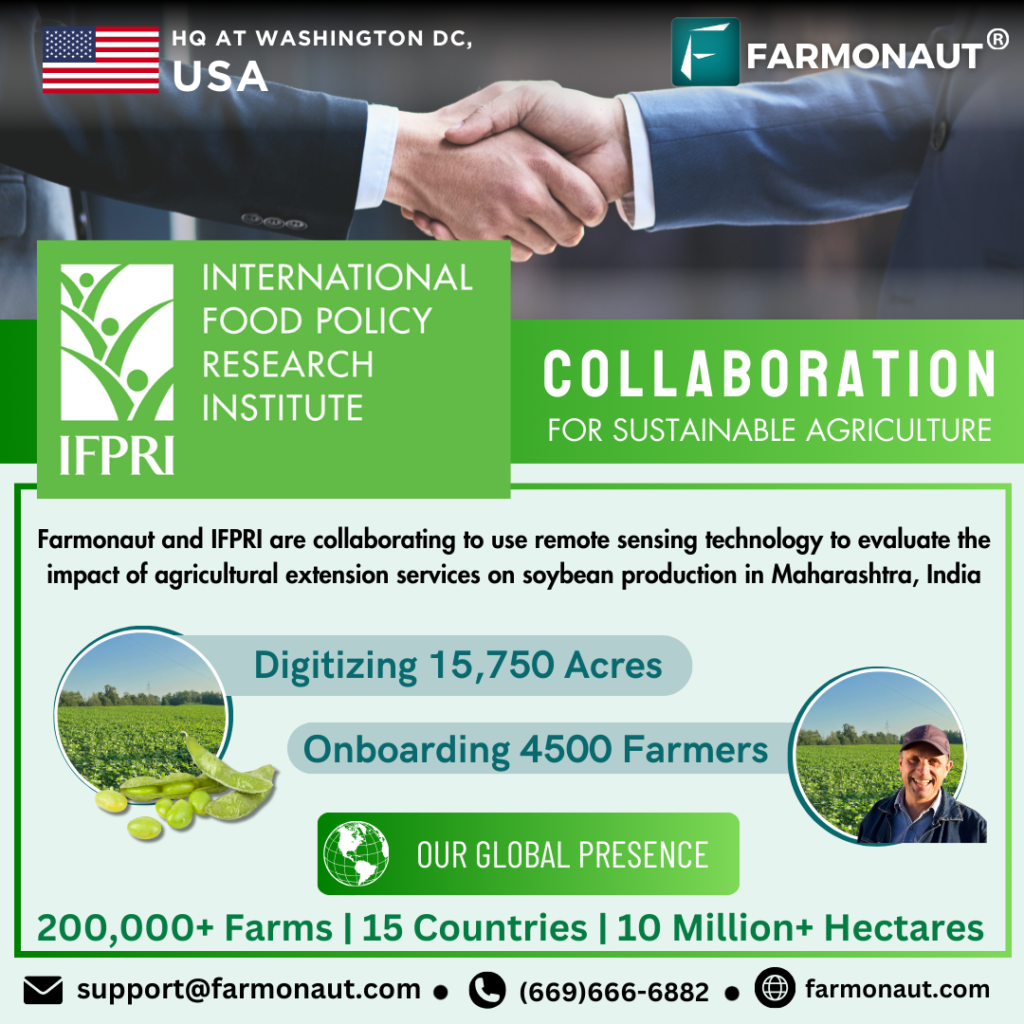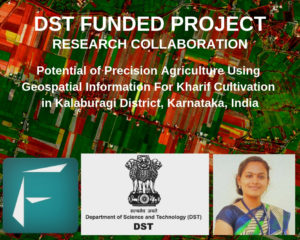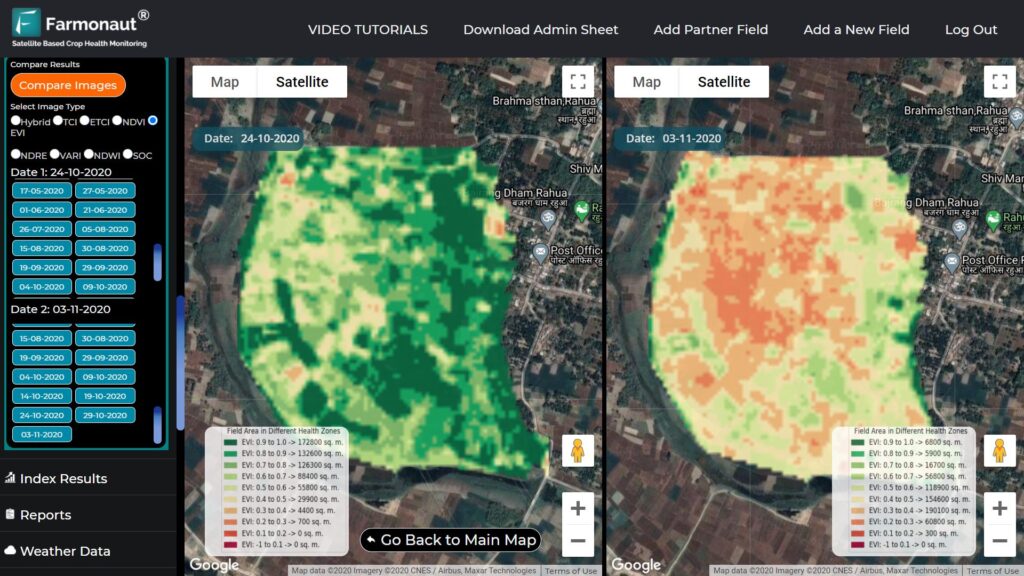The DNA Dilemma: How Scientific Literacy Shapes Food Labeling Policies and Consumer Choices

“Over 80% of Americans support mandatory DNA labeling on foods, revealing a significant gap in public understanding of genetics.”
In today’s world, where scientific advancements shape our daily lives, the intersection of public understanding and policy-making has never been more critical. A recent scientific survey has unveiled a startling revelation that highlights the profound disconnect between scientific literacy and consumer perceptions. This blog post delves into the complexities of this issue, exploring how scientific understanding – or the lack thereof – influences food labeling policies, consumer choices, and the broader landscape of agricultural economics.
The DNA Labeling Conundrum
At the heart of this discussion lies a peculiar finding: over 80% of Americans support mandatory DNA labeling on foods. This statistic, while seemingly innocuous, unveils a significant gap in public understanding of basic genetics and agricultural science. To comprehend the implications of this finding, we must first address a fundamental question: Why is this support for DNA labeling problematic?
- DNA is present in all living organisms, including virtually all foods we consume (except for highly processed foods where DNA might have been destroyed).
- Labeling foods for containing DNA is akin to labeling water for containing hydrogen – it’s a universal and natural component.
- This misconception diverts attention from more pertinent food safety concerns and labeling issues.
The widespread support for such labeling underscores a critical gap in scientific literacy, particularly in the realms of biology and agriculture. This gap has far-reaching consequences, influencing everything from individual consumer choices to broader agricultural policy and science decisions.
The Ripple Effect of Scientific Illiteracy
“Scientific illiteracy impacts agricultural policy, with consumer misconceptions potentially complicating food safety regulations and diverting attention from genuine issues.”
The implications of this scientific knowledge gap extend far beyond mere consumer confusion. They penetrate deep into the realms of policy-making, agricultural economics research, and public health initiatives. Let’s explore some of these ripple effects:
- Misguided Policy Decisions: When a significant portion of the population misunderstands basic scientific concepts, it can lead to pressure for unnecessary or even counterproductive regulations.
- Resource Misallocation: Focusing on non-issues like DNA labeling can divert resources from addressing genuine food safety concerns and agricultural challenges.
- Consumer Confusion: Overemphasis on irrelevant information can overwhelm consumers, making it harder for them to make informed choices about their food.
- Economic Impact: Unnecessary labeling and regulations can increase costs for producers and, ultimately, consumers.
As we navigate these complexities, it’s crucial to understand the role of scientific literacy in shaping public opinion and policy. This understanding forms the foundation for addressing the challenges at hand.
The Science Behind the Survey
To fully grasp the significance of the survey results, we need to delve into the science that underlies them. DNA, or deoxyribonucleic acid, is the fundamental building block of life. It’s present in every living organism, from the simplest bacteria to the most complex plants and animals. Here’s why the concept of “DNA-free” food is scientifically unfounded:
- DNA is essential for life: It carries the genetic instructions for the development, functioning, growth, and reproduction of all known organisms.
- Natural occurrence: DNA is naturally present in all plant and animal-based foods.
- Non-toxic nature: Consuming DNA is not only safe but unavoidable in a normal diet.
The misconception about DNA in food likely stems from confusion with other food-related scientific terms, such as GMOs (Genetically Modified Organisms) or artificial additives. This confusion highlights the need for better science education and communication.
GMO Labeling Policies: A Case Study in Scientific Literacy
The debate surrounding GMO labeling policies serves as an excellent case study for understanding how scientific literacy impacts food labeling and consumer choices. Genetically modified organisms have been a topic of heated debate in recent years, often fueled by misconceptions and fear rather than scientific understanding.
GMO labeling has become a contentious issue in many countries, including the United States. The debate often centers around consumers’ “right to know” versus the scientific consensus on GMO safety. Here’s how scientific literacy plays a crucial role:
- Understanding GMOs: Scientifically literate consumers are more likely to understand what GMOs are and how they’re developed.
- Risk Assessment: Those with higher scientific literacy can better evaluate the risks and benefits associated with GMOs.
- Policy Implications: A more scientifically literate populace is likely to support evidence-based policies rather than those based on fear or misconception.
The parallel between GMO labeling and the hypothetical DNA labeling scenario is clear. Both cases demonstrate how misunderstanding of basic scientific concepts can lead to misguided policy demands.
The Role of Agricultural Economics Research
Agricultural economics research plays a pivotal role in understanding and addressing the challenges posed by scientific illiteracy in the food industry. This field of study examines the economic impacts of various agricultural practices, policies, and consumer behaviors. In the context of food labeling and scientific literacy, agricultural economists investigate several key areas:
- Consumer Behavior: How do different types of food labels influence purchasing decisions?
- Market Impacts: What are the economic consequences of implementing various labeling policies?
- Policy Analysis: How do different regulatory approaches affect the agricultural sector and food supply chain?
- Education Strategies: What are effective methods for improving consumer understanding of food science and agriculture?
By conducting rigorous research in these areas, agricultural economists provide valuable insights that can guide policy-making and help bridge the gap between scientific knowledge and public perception.
Consumer Food Safety Concerns: Perception vs. Reality
The disconnect between scientific understanding and public perception is particularly evident when it comes to consumer food safety concerns. While consumers are right to be concerned about food safety, their focus is often misplaced due to lack of scientific literacy. Let’s examine some common misconceptions:
- Natural vs. Synthetic: Many consumers perceive “natural” ingredients as inherently safer, despite scientific evidence to the contrary.
- Chemical-Free Foods: The idea of “chemical-free” food is scientifically impossible, as all food is made up of chemicals.
- Organic Safety: While organic farming has benefits, it doesn’t necessarily produce safer food than conventional methods.
- GMO Fears: Despite extensive scientific research showing the safety of GMOs, many consumers remain wary.
These misconceptions can lead to consumer choices that are not based on scientific evidence, potentially impacting both individual health decisions and broader market trends.
The Rational Ignorance Phenomenon
To understand why scientific illiteracy persists in the age of readily available information, we must consider the concept of “rational ignorance.” This economic theory suggests that it’s rational for individuals to remain ignorant about certain issues when the cost of educating oneself outweighs the potential benefits. In the context of food labeling and agricultural science:
- Time Constraints: Many consumers lack the time to thoroughly research every aspect of their food choices.
- Complexity: The science behind agriculture and food production can be complex and daunting for non-experts.
- Perceived Relevance: Some may not see the immediate relevance of understanding agricultural science to their daily lives.
This rational ignorance can lead to reliance on simplified or even misleading information, contributing to the support for policies like mandatory DNA labeling.
The Critical Role of Consumer Education
Addressing the scientific literacy gap requires a concerted effort in consumer education. This is where companies like Farmonaut play a crucial role. As an agritech leader, Farmonaut emphasizes the importance of bridging the knowledge gap between consumers and agricultural science.
Farmonaut offers advanced, satellite-based farm management solutions that not only benefit farmers but also contribute to consumer education. By making agricultural data more accessible and understandable, such technologies can help demystify food production processes for the general public.
Education initiatives should focus on:
- Basic genetics and agricultural science
- The science behind food production and safety
- Critical thinking skills for evaluating food-related claims
- Understanding food labels and their implications
By improving scientific literacy, we can empower consumers to make more informed choices and contribute to more rational public discourse on food policy.
The Impact on Agricultural Policy and Science
The ramifications of scientific illiteracy extend far beyond individual consumer choices, significantly impacting agricultural policy and science decisions. When a large portion of the population misunderstands basic scientific concepts, it can lead to:
- Misguided Regulations: Pressure for unnecessary or even harmful regulations based on misconceptions.
- Research Priorities: Skewed research funding towards addressing perceived rather than actual risks.
- Innovation Barriers: Resistance to beneficial agricultural innovations due to unfounded fears.
- Policy Inefficiency: Resources allocated to addressing non-issues instead of genuine agricultural challenges.
To address these challenges, policymakers, scientists, and educators must work together to improve public understanding of agricultural science and its implications for food production and safety.
The Role of Technology in Bridging the Knowledge Gap
Advanced agricultural technologies play a crucial role in bridging the knowledge gap between producers and consumers. Farmonaut’s satellite-based farm management solutions, for instance, offer unprecedented transparency in food production.
These technologies provide:
- Real-time Crop Monitoring: Allowing consumers to understand how their food is grown.
- Data-driven Insights: Helping farmers make more informed decisions about crop management.
- Transparency in Supply Chains: Enabling traceability from farm to table.
By leveraging these technological advancements, we can create a more informed and engaged consumer base, ultimately leading to more rational discussions around food labeling and agricultural policies.
Explore Farmonaut’s API for advanced agricultural insights
The Economic Implications of Scientific Literacy in Agriculture
The level of scientific literacy among consumers has significant economic implications for the agricultural sector. These impacts manifest in various ways:
- Market Demand: Consumer misconceptions can shift market demand, potentially favoring less efficient or more expensive production methods.
- Regulatory Costs: Unnecessary regulations driven by public misconceptions can increase costs for producers.
- Innovation and Investment: Fear of public backlash may discourage investment in beneficial agricultural technologies.
- Trade Implications: Differing levels of scientific literacy across countries can lead to trade barriers and disputes.
Understanding these economic implications is crucial for developing effective policies that balance consumer concerns with scientific evidence and economic realities.
Comparative Analysis: Impact of Scientific Literacy on Food Labeling and Consumer Choices
| Aspect | Low Scientific Literacy | High Scientific Literacy |
|---|---|---|
| Understanding of DNA | Limited; often confused with GMOs | Comprehensive; recognizes DNA as universal in living organisms |
| Perception of GMOs | Generally negative; based on misconceptions | Balanced; based on scientific evidence |
| Support for Mandatory Labeling | 80% support for DNA labeling | 20% support for DNA labeling |
| Food Safety Concerns | Often misplaced; focus on perceived rather than actual risks | Evidence-based; focus on scientifically validated concerns |
| Policy Implications | Support for potentially unnecessary or counterproductive regulations | Support for evidence-based, effective policies |
The Way Forward: Strategies for Improving Scientific Literacy
Addressing the scientific literacy gap requires a multi-faceted approach involving various stakeholders. Here are some key strategies:
- Education Reform: Integrating more comprehensive science education in school curricula, with a focus on practical applications.
- Public Outreach: Engaging scientists and agricultural experts in public communication and outreach programs.
- Media Responsibility: Encouraging responsible reporting of scientific issues in the media, avoiding sensationalism.
- Industry Transparency: Promoting transparency in the food industry to build trust and understanding among consumers.
- Policy Alignment: Ensuring that food labeling policies are grounded in scientific evidence and promote genuine consumer understanding.
Companies like Farmonaut play a crucial role in this process by providing tools that make agricultural data more accessible and understandable to the general public.
Explore Farmonaut’s API Developer Docs for in-depth agricultural insights
Conclusion: Bridging the Gap for a Sustainable Future
The DNA labeling dilemma serves as a stark reminder of the critical importance of scientific literacy in shaping food labeling policies and consumer choices. As we’ve explored throughout this blog, the consequences of scientific misconceptions extend far beyond individual consumer decisions, impacting agricultural policy, economic outcomes, and the overall direction of scientific research in agriculture.
By fostering a more scientifically literate society, we can:
- Empower consumers to make informed choices based on evidence rather than fear or misconception
- Encourage the development of rational, science-based food labeling policies
- Promote innovation in agriculture that addresses real challenges and enhances food security
- Build a more sustainable and efficient agricultural sector that benefits producers and consumers alike
The path forward requires collaboration between educators, policymakers, scientists, and innovative companies like Farmonaut. By leveraging advanced technologies and focusing on education, we can bridge the knowledge gap and create a more informed, scientifically literate society capable of addressing the complex challenges facing our food systems.
As we move forward, let’s commit to promoting scientific literacy, encouraging critical thinking, and fostering a deeper understanding of the food we eat and the systems that produce it. Only then can we truly make informed decisions that benefit both individual health and the broader agricultural landscape.

FAQs
- Q: Why is DNA labeling on food unnecessary?
A: DNA is present in all living organisms and is a natural component of most foods. Labeling foods for containing DNA is redundant as it’s universally present in non-processed foods. - Q: How does scientific literacy affect food labeling policies?
A: Higher scientific literacy leads to more informed public opinion, which can influence the creation of evidence-based and effective food labeling policies. - Q: What role does technology play in improving agricultural understanding?
A: Technologies like Farmonaut’s satellite-based solutions provide transparency in food production, helping bridge the knowledge gap between producers and consumers. - Q: How can consumers improve their scientific literacy regarding food?
A: Consumers can improve their scientific literacy by seeking information from reputable scientific sources, attending educational workshops, and critically evaluating food-related claims. - Q: What are the economic implications of low scientific literacy in agriculture?
A: Low scientific literacy can lead to misguided regulations, increased production costs, and potential trade barriers, affecting the overall efficiency and profitability of the agricultural sector.










